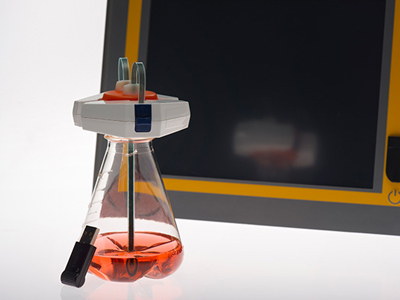Cell culture refers to the process of growing cells outside of their natural environment, typically in a laboratory setting. This technique is an essential tool for researchers in many fields, including biology, biochemistry, and medicine. In this article, we will discuss the basics of cell culture, including the necessary equipment, fundamental concepts, and protocols.
To start with, the essential equipment for cell culture includes a laminar flow hood, an incubator, and a microscope.
Laminar Flow Hood: This piece of equipment provides a sterile environment for cell culture work. It works by drawing in air through a filter and blowing it out into the workspace, creating a laminar flow of clean air that prevents contaminants from entering the culture.
Incubator: An incubator is necessary to provide cells with the appropriate environment for growth. Most cells require a temperature of 37°C and a 5% carbon dioxide environment to survive and proliferate. The incubator must maintain a stable temperature and gas environment.
Microscope: A microscope is required to examine cells in culture. It enables researchers to observe cell morphology, monitor growth rates, and evaluate cell viability.

Online GlucoseLactate Monitoring System
There are several fundamental concepts that researchers must understand to effectively work with cell culture.
Cell Types: Different cell types have unique growth requirements and morphologies. The selection of the appropriate cell type for a particular experiment is essential to achieve accurate results.
Cell Lines: Cell lines are groups of cells that are genetically identical and derived from a single cell. They can be maintained in culture for many generations.
Primary Cells: Primary cells are cells that have been isolated directly from tissues. They have a limited lifespan in culture and can only be cultured for a few passages.
Cell Culture Media: Cell culture media are solutions that provide cells with the necessary nutrients, growth factors, and other essential components required for growth. There are many different types of media available for different cell types.
Cell Passage: Cell passage refers to the process of transferring cells from one culture vessel to another. It is essential to maintain healthy cell growth and prevent over-confluency.
There are several steps involved in cell culture protocols, including:
Cell Isolation: The first step in cell culture is to isolate the desired cell type from the tissue of interest. This is typically done using enzymatic digestion or mechanical disruption.
Cell Culture: Once the cells have been isolated, they are cultured in a suitable culture medium in a sterile environment. The medium must be changed regularly to ensure the cells have the necessary nutrients and growth factors.
Cell Passage: As the cells grow and reach confluency, they must be passaged to prevent overgrowth. This involves detaching the cells from the culture dish, diluting them, and transferring them to a new dish with fresh medium.
Cell Cryopreservation: Cells can be frozen for long-term storage by cryopreservation. This involves the addition of a cryoprotectant to the cells, which protects them from damage during freezing and thawing.
Cell Characterization: Cell characterization is essential to ensure that the cells being used are of the desired cell type and free from contaminants. This is typically done using techniques such as flow cytometry or PCR.
Online Glucose/Lactate Monitoring System is a sensor system based on the principle of enzymatic electro-chemistry, which combines a disposable enzyme sensor and a fluid element, and performs data analysis through an analyzer, ensuring high measurement performance and process reliability. For continuous online monitoring of glucose and lactose during cell lines, media and process development projects.
In summary, cell culture is an essential technique used in many areas of research. To successfully work with cell culture, researchers must have a basic understanding of the necessary equipment, fundamental concepts, and protocols. Proper cell culture techniques are necessary to obtain reliable and reproducible results, and attention to detail is critical.
Copyright:@2020-2021
Comments Please sign in or sign up to post.
0
0 of 500 characters used